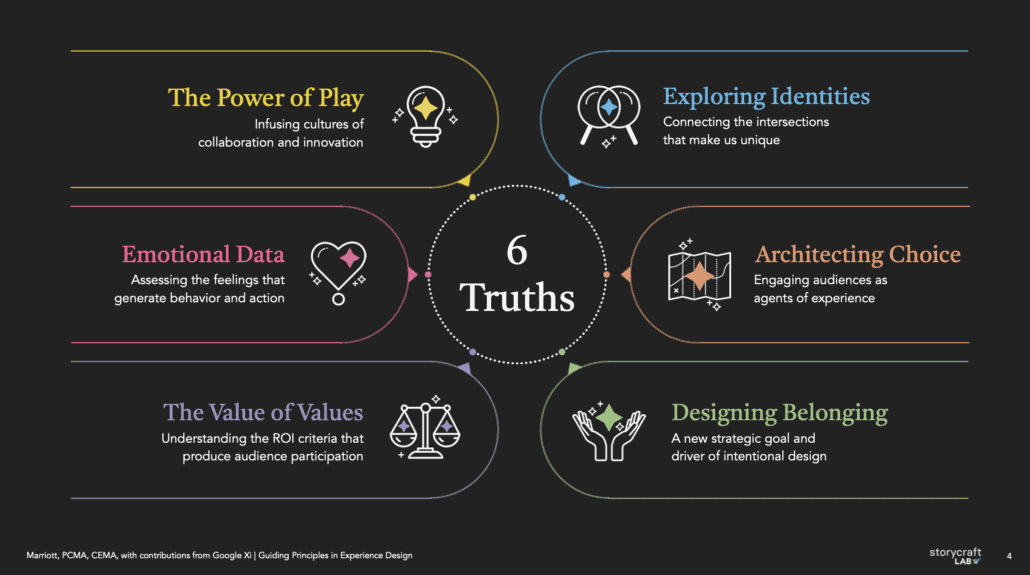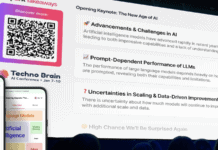 PCMA, CEMA and Marriott International collaborated to discover six experiential design principles event planners can use to design more effective experiences.
PCMA, CEMA and Marriott International collaborated to discover six experiential design principles event planners can use to design more effective experiences.
Marriott International, the Professional Convention Management Association (PCMA) and the Corporate Event Marketing Association (CEMA) recently undertook a research project to discover the consumer behavior trends that will drive event experiential design efforts now and into the future. Here are the six main principles outlined in the report, ““Guiding Principles in Experience Design,” that will help drive lasting results for event participants.
- Exploring Identities: “You have to be okay with being uncomfortable and putting yourself out there – create conversations and camaraderie with people, hear other people’s points of view. We need to be more intentional about creating safe spaces to facilitate this and create a sense of community to enable it,” said Jessica Charles, Vice President, Programming + Events, Forbes, in the report. This entails creating networked communities where people can engage with diverse opinions outside of their usual “bubble,” as well as including local connections, such as local chapters, satellite groups and local communities, in a larger engagement strategy. As Megan Henshall, Events Strategic Solutions Lead, Google, said in the report, “Our job is to create a safe environment that will encourage people to stretch outside of their comfort zone.” However, she added, “It’s also really tricky to do.”
- Architecting Choice: Letting event participants shape their own experiences has been a growing trend for a while now — even if it’s a tough one for control-loving event planners. “There’s a really fine balance between assumptions and curiosity when you’re designing events because there’s challenge and risk in giving all the authority to the audience,” said Sarah Adeel, Senior Manager, Inclusion, Diversity + Equity, Amazon. “It’s important to find the middle ground between your own assumptions, which are beyond the data bias, and keeping the curiosity alive in your audience.” Added Kevin Bethune, Author, Reimagining Design: Unlocking Strategic Innovation, “It’s not just who you’re designing for, but who you are designing with. Ideally, we should meet people where they are and engage them as thought partners to co-create a better way forward.”
- Designing for Belonging: Janet Sperstad, Faculty Director, Madison Area Technical College, summed it up this way: “Attendees want to know you care about them. They want to know you’re going to help them get their needs met and guide them in a way that helps them find value.” However, the report states, it’s important to recognize “that belonging means something different for everyone.” Engage your audience from the beginning of the design process, then use tools such as Braindate to support peer-to-peer conversations.
- Value of Values: Today’s attendees seek experiences that provide value beyond the dollars spent, including sustainability, inclusion, hybrid channels, community engagement, time and uniqueness. “The ways in which individuals assess the value of experiences has changed,” the report states. “Time and community connection are top of mind when our audiences make choices about investment of the time, energy and personal resources.”
- Emotional Data: While surveys are a staple tool in most planners’ toolboxes, Chris Laping, Author of People Before Things, said in the report, “Most surveys do not measure how people feel. Rather, they measure how people feel about the choices you gave them, resulting in inherent confirmation bias.” One example the report included of an organization that is on the right track is PCMA, which partnered with Xenus AI to capture the overall emotional state of participants through facial recognition at its 2023 Convening Leaders conference rather than relying on the usual exit survey. “Start by determining why you want the data you collect and what you intend to do with it,” the report advised.
- Power of Play: “Storytelling and narrative is the way we make sense of the world, and that’s one key way which we can help people make sense of all these multiple tools,” said Ryan Howard, Technical Program Manager, Experience Design, Google. “Breaking something apart and putting it back together – that’s a shortcut for understanding and making sense of it. Play is interesting, because it solves many of its own problems – we put the parts together, blow them up, and put them back together in a new way.” Include both structured and unstructured playtime — but think twice about including games. While they’re fun and can bring some camaraderie, they also tend to make people more competitive, and less likely to collaborate and experiment. Artificial intelligence (AI) is now becoming a good tool to facilitate connection, as are including dedicated, flexible spaces where people can experiment without have to adhere to too many rules.
The study, which is the latest in a series of industry reports compiled by PCMA and Marriott since 2015, was first revealed at Marriott’s The Exchange: Association Masters Customer Experience. Download the full report here.
You May Also Be Interested In…
How to Create Goosebump Events










